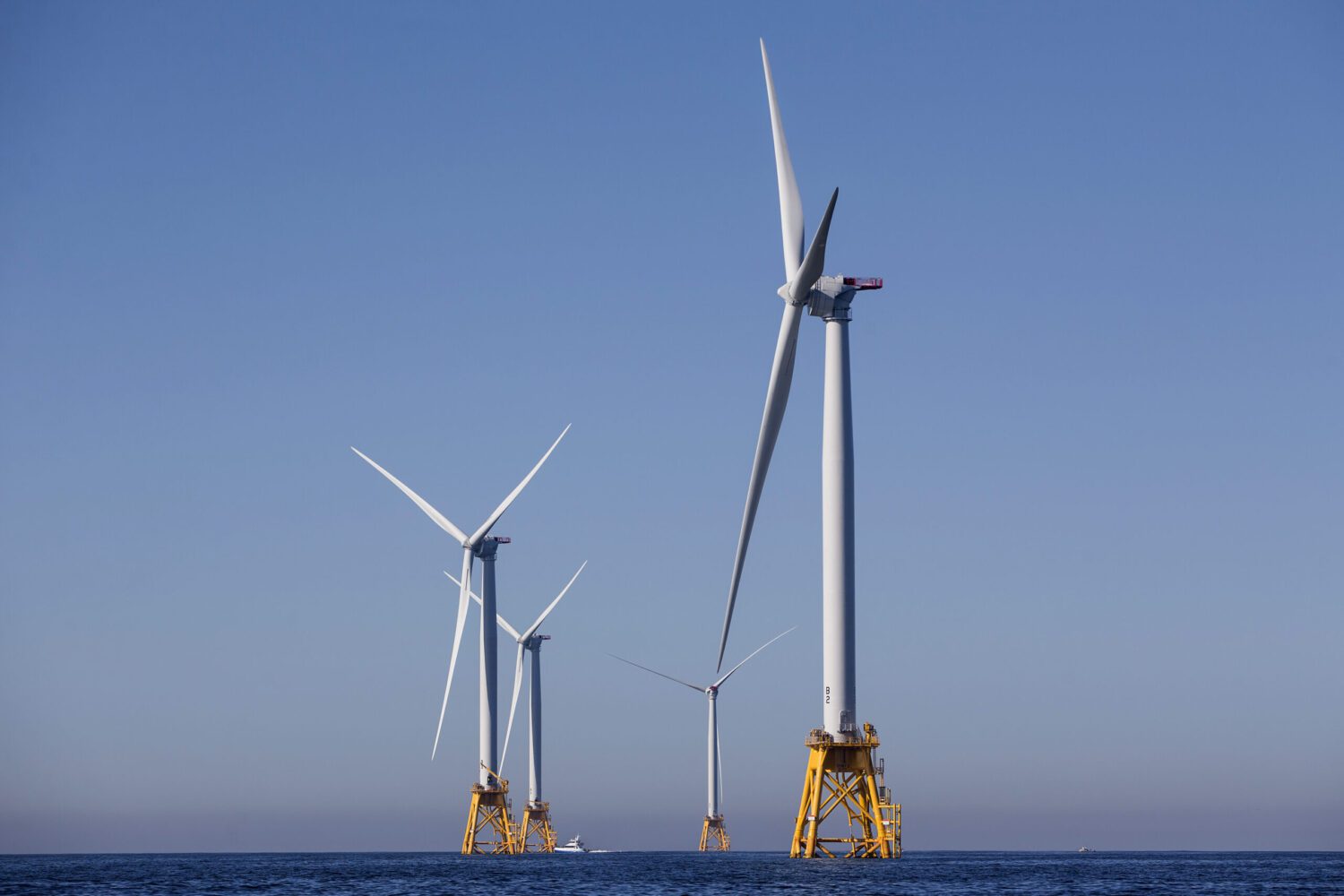BOSTON — Just as the U.S. is plunging into the deep end of offshore wind energy development, the nascent domestic industry is facing major supply chain problems, surging costs, permitting delays and other headwinds that could affect the aggressive installation timelines state and federal governments have targeted.
Those obstacles, chiefly triggered by the pandemic, inflation and the Russian invasion of Ukraine, should prompt states to more closely collaborate on workforce development, transmission planning, building a domestic supply chain and other areas where they can work together to help keep costs down, said several panelists at an industry conference in Boston this week.
“It’s challenging,” said Tristan Grimbert, president and CEO of EDF Renewables, which is part of a joint venture with Shell New Energies to develop an offshore wind lease area off the coast of New Jersey.
“It requires a lot of things to go right. It does create some costs because you have to build a supply chain from zero. … It’s a pretty ambitious thing that the U.S. is doing. Five years ago there was no offshore at all. Now you’re talking about dozens of projects that are ongoing.”
There are just two U.S. offshore wind projects currently in operation — a two-turbine test array off the coast of Virginia operated by Dominion Energy that is planned to grow into a much larger 2.6-gigawatt project and the Block Island Wind Farm off the coast of Rhode Island — but there are many more in varying stages of construction and development, mostly along the Atlantic Coast. However, the Bureau of Ocean Energy Management, which oversees energy development in federal waters, held a lease sale for areas off the coast of California and is taking steps to open up the Gulf of Mexico as well. Other areas off the coast of Oregon have been identified as potential lease areas.
The Biden administration has set a goal of 30 gigawatts of offshore wind by 2030. Many coastal states — from California to Louisiana to Maine — have their own aggressive goals. Maryland, for example, just upped its target to 8.5 gigawatts.
If the buildout goes as envisioned, coastal states will be producing massive amounts of electricity offshore that will satisfy a huge portion of their electric demand, which could improve reliability of the overall electric grid and mean fewer new power plants elsewhere.
But at the same time, costs are spiking. An analysis released in April by Energy Monitor, part of GlobalData, found that the cost of a wind turbine has increased 38% over the past two years. And those increases are having repercussions.
SouthCoast Wind, a joint venture by Shell and Spanish company Ocean Wind planned for off the coast of Massachusetts, is seeking to terminate and renegotiate deals with local utilities to take the electricity to be generated from the project. SouthCoast said its costs have increased 20%. Another Massachusetts wind farm developer, Avangrid Renewables, ended its existing contracts with state utility companies in 2022 for similar cost concerns.
And while many states that are pursuing offshore wind see the potential not just for clean energy but are also eager for the thousands of jobs, manufacturing facilities and other economic development plums a surge in wind development can bring, industry representatives urged state leaders to take more a regional tack.
“You cannot have each component produced in each state,” said Sy Oytan, chief operating officer for Avangrid, which owns half of the 800-megawatt Vineyard Wind 1 project off the coast of Massachusetts.
The concerns aren’t new. A pair of reports released earlier this year found that meeting federal and state offshore wind goals will require billions of dollars in spending on transmission infrastructure, “unprecedented” cooperation between grid operators and federal and state agencies and a major buildout of a domestic supply chain.
“I think ultimately there’s going to potentially just be an adjustment with some of these timelines with these projects,” said Chris Kearns, acting commissioner of Rhode Island’s Office of Energy Resources.
At the moment, Kearns said, Rhode Island has the most aggressive renewable energy goal in the nation, seeking 100% renewable energy by 2033. It is also home to the nation’s first offshore wind project, the 30-megawatt Block Island Wind Farm, and development is proceeding on the proposed 700-megawatt, 65-turbine Revolution Wind project off the coast of the state.
“We still are reliant on a number of these products coming from overseas,” Kearns said. “But that’s just the nature of the energy industry, whether it’s offshore wind, solar, electric vehicle charging infrastructure. It’s just a very hot market in terms of the overall clean energy market and you have all the states pursuing it and then you have countries pursuing it and being very aggressive, so there’s just a lot of demand right now. And that’s going to trigger delays.”
Federal officials speaking at the conference said they’re working to streamline permitting and foster transmission upgrades and state collaboration.
Jessica Stromberg, chief of the environment branch for renewable energy at the Bureau of Ocean Energy Management, said the agency is constantly “balancing the need to move forward to address the climate crisis against the equally important need of ensuring that the actions taken are avoiding, minimizing and mitigating impacts to the greatest extent possible.”
She added that BOEM has proposed new “modernized” regulations for clean energy development.
Jeffrey Dennis, deputy director for transmission at the U.S. Department of Energy’s Grid Deployment Office, said planning a transmission system to connect all of the wind energy that states are commissioning, not just to the shore but to different regions, could produce major benefits for electric ratepayers down the road.
“As we look toward that vision of a more interconnected, more meshed offshore wind network we’re going to need a lot of ongoing collaboration from the states,” he said. “So one of our primary and immediate recommendations is for offshore wind states to form a more formal collaborative.” Individual states’ goals “are going to start to need to inform each other if we’re going to build this cost effective meshed network that I’m talking about.”
Indeed just last month, Massachusetts sent a request to the Department of Energy on behalf of all of the New England states as well as New York, and New Jersey to form a Northeast States Collaborative on Interregional Transmission, which the Massachusetts governor’s office called “a new approach to planning for electric transmission infrastructure across multiple regions” that could lower prices for consumers and increase reliability as well as access to clean energy.
There are also other cooperative frameworks — like Virginia, Maryland and North Carolina’s memorandum of understanding to make the Southeast and mid-Atlantic an offshore wind hub and the Federal-State Offshore Wind Implementation Partnership, a collaboration between federal agencies and governors in 11 East Coast states.
“In terms of economic development I’ve always said there’s a pie and everyone’s going to get their fair share of it,” said Kearns, the Rhode Island energy official, noting that the Revolution Wind project will share work between Rhode Island and Connecticut. “It’s a multi-state effort and these projects are going to spill over in terms of economic development.”







